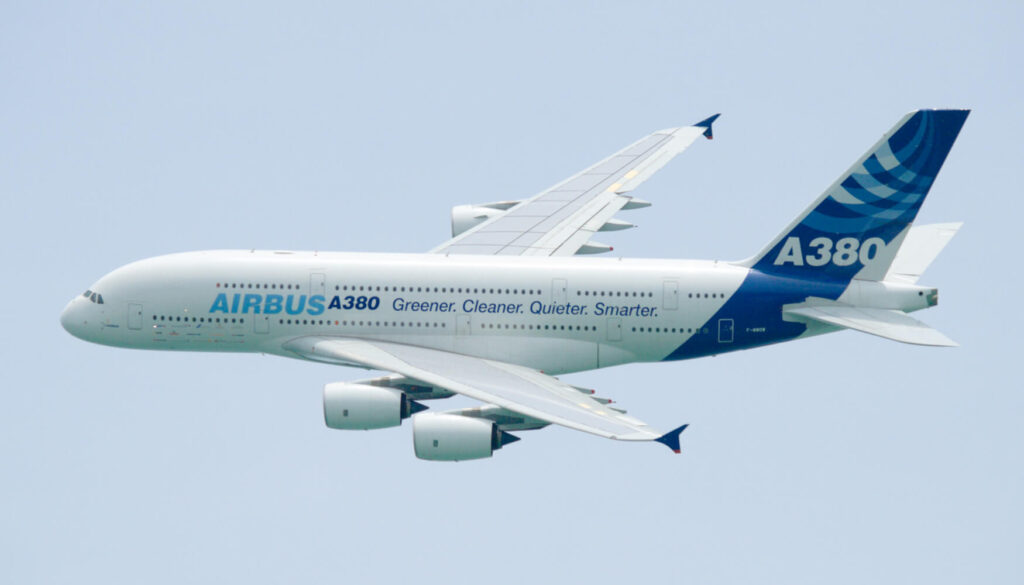When the Airbus A380 took off for the first time on April 27, 2005, the whole world was watching. Some were probably wondering if this giant, the largest civilian aircraft ever built, could even leave the ground.
Following six years of development, the 400 metric tons of the A380 MSN001 took off from Airbus headquarters in Toulouse-Blagnac airport before the eyes of thousands of spectators. Onboard was a crew of six people: two test pilots, a flight mechanic and three engineers. No seat was installed in the cabin. Instead, water ballasts simulated the weight of passengers to test the stability of the superjumbo.
The first flight lasted 3 hours and 54 minutes, circling above the Pyrenees range, the Atlantic Ocean, before landing back in Blagnac to thunderous applause. “You pilot it like a bicycle,” commented Jacques Rosay, one of the test pilots, during the flight.
Equipped with four Rolls-Royce Trent 900 engines, the aircraft capable of carrying more than 850 passengers spread over two decks was thought to be an answer to the ever-growing demand in flight seats, and a successor to the mythical Boeing 747.
It marked the beginning of a 15-month-long test campaign. The aircraft received its certification a year later, in December 2006, prompting another ceremony in Toulouse. The A380 entered service with its launch customer Singapore Airlines (SIA1) (SINGY) in October 2007. Its operation resulted in some modifications to airport infrastructure due to its never-seen size and transport capacity.
15 years later, the career of the A380 feels bittersweet. The wonder of engineering was caught up by smaller and more efficient twin-engine airliners, such as the Boeing 777 or the Airbus A350, which allowed more flexibility for operators as well as passengers. On February 14, 2019, Airbus announced it would put an end to the production of the aircraft in 2021. Yet to this day, the A380 is still a technological prowess and will remain, alongside Concorde, one of the jewels of European engineering.


